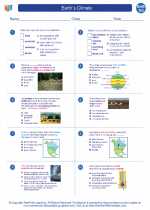Sound Reflection
Sound reflection is the process by which sound waves bounce off a surface and change direction. When sound waves encounter a surface, they can be reflected, absorbed, or transmitted through the material. Reflection of sound waves plays a crucial role in various everyday phenomena and is important in the field of acoustics.
How Sound Reflection Occurs
When sound waves encounter a surface, such as a wall, the waves can be reflected off the surface in a manner similar to how light waves reflect off a mirror. The angle at which the sound waves strike the surface (incident angle) is equal to the angle at which the sound waves are reflected (angle of reflection), according to the law of reflection. This process results in the redirection of sound waves.
Applications of Sound Reflection
Sound reflection is utilized in various ways, such as in the design of concert halls, recording studios, and public spaces to optimize acoustics and minimize sound distortion. Additionally, in sonar technology, sound reflection is used to detect objects underwater by analyzing the reflected sound waves. Understanding sound reflection is also important in architectural design to control noise levels within buildings and create pleasant acoustic environments.
Study Guide
- Law of Reflection: Explain the law of reflection and how it applies to sound waves.
- Types of Surfaces: Discuss how different types of surfaces (e.g., soft, hard, rough, smooth) affect sound reflection.
- Acoustic Design: Explore the role of sound reflection in the design of concert halls, recording studios, and public spaces.
- Sonar Technology: Investigate how sound reflection is used in sonar technology for underwater object detection.
- Architectural Acoustics: Examine the importance of understanding sound reflection in architectural design for controlling noise levels and creating pleasant acoustic environments.
Understanding sound reflection is essential for various fields, from physics and engineering to architecture and music. By grasping the principles of sound reflection, one can appreciate its impact on our daily experiences and the design of the world around us.
.◂Earth Science Worksheets and Study Guides High School. Earth`s Climate

 Worksheet/Answer key
Worksheet/Answer key
 Worksheet/Answer key
Worksheet/Answer key
 Vocabulary/Answer key
Vocabulary/Answer key
 Vocabulary/Answer key
Vocabulary/Answer key
 Vocabulary/Answer key
Vocabulary/Answer key
